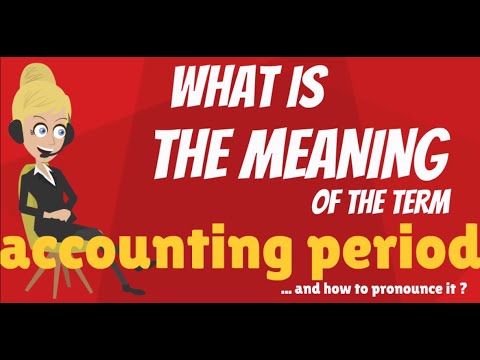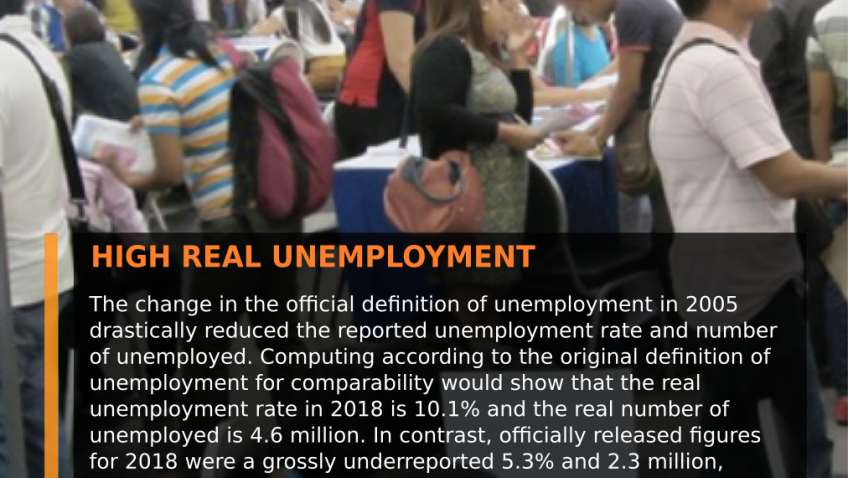Contents
While debt is money borrowed by a company, equity does not have to be repaid. The term is used to describe the amount of debt that forms an integral component of the company’s entire capital. A company with high debt levels is said to be a highly leveraged business, while one with a low proportion of debt is a lower levered company. The real interest rate is the interest rate payable to the lender for supplying the funds or in other words, for surrendering the funds for a particular period. Prevent Unauthorized Transactions in your demat / trading account Update your Mobile Number/ email Id with your stock broker / Depository Participant.
The cost of capital can also aid in making key company budget calls that use company financial sources as capital. This minimal acceptable IRR for one specific company might be 15% while for others could possibly be 20% or 25% depending on many components, particularly market circumstances. In formulating the entire price of equity and the price of debt, companies need to calculate a weighted average value of capital , combing all firm financing sources into the calculation. A firm’s WACC can be used to estimate the expected prices for all of its financing.
If the rate of interest on debt is lower than the return on investment, then the business can increase its finance through borrowed funds. But the company should go for equity if they are not sure if they can cover the fixed cost of interest. ABC Ltd. issues 15% debentures of face value of ` 1000 each at a flotation cost of ` 50 per debenture. Find out the cost of capital of the debenture which is to be redeemed in 5 annual instalments of ` 200 each starting from the end of year 1. In case, the debt is repayable only at the time of maturity and there is no annual amortization then Equation 5.3 will not contain the second element i.e., COPi/(1 + kd)i.
It should be noted that this cost of capital which is used to discount the cash flows (after-tax) should also be after-tax only. If the firm is using IRR technique, then the cut-off rate should also be taken on an after-tax basis. As discussed in the following sections, it is only the debt financing for which the tax adjustment to cost of capital is required. The reason being that interest on bonds and debentures is tax deductible. The other sources i.e., the preference share capital and the equity share capital do not require such tax adjustment.
The minimum rate of return that a firm must earn in order to satisfy the expectations of its investor is the cost of capital of the firm. Liquidity ratios show how much cash a company has on hand to meet its short-term obligations. The key is to determine whether the company has enough cash on hand to meet its obligations but not too much that it won’t be able to make payments. Net debt ratios are widely used in credit analysis, and the quick and current ratios are the most common.
- An excessively high debt to equity ratio could mean a company is not using its growth potential and is paying too much for capital.
- Therefore, the firm has an implicit cost of these retained earnings and this implicit cost is the opportunity cost of investors.
- It is possible to find out the cost of equity capital by using the mechanism of risk-return trade off as given by the Capital Assets Pricing Model .
- The information, product and services provided on this website are provided on an “as is” and “as available” basis without any warranty or representation, express or implied.
- The higher the expected market return, the higher the cost of equity and vice versa.
The information, product and services provided on this website are provided on an “as is” and “as available” basis without any warranty or representation, express or implied. Khatabook Blogs are meant purely for educational discussion of financial products and services. Khatabook does not make a guarantee that the service will meet your requirements, or that it will be uninterrupted, timely and secure, and that errors, if any, will be corrected. The material and information contained herein is for general information purposes only. Consult a professional before relying on the information to make any legal, financial or business decisions. Khatabook will not be liable for any false, inaccurate or incomplete information present on the website.
Reasons Why External Audit and its Scope is Important to Business
A company’s capital structure will ultimately determine its performance. A capital structure that is too reliant on the debt will leave less cash available for management compensation and free cash. While there is no perfect science to determine the optimal capital structure, there are some guidelines for making the right decision. Many managements take various factors into account when making a capital structure decision, including the amount of debt needed, debt cost and investment return. Dividend per share indicates the distribution of profit of the firm as compensation for an equity share held by an investor.

Is that capital is a mixture of both, which a business uses to finance its day-to-day operations, growth, and assets. Owner’s funds or Equity includes Preference share capital, equity share capital, retained earnings, reserves, and surpluses. While debt or borrowed funds include public deposits, loans, and debentures. ABC Ltd. issues 15% Preference shares of the face value of ` 100 each at a flotation cost of 4%.
Types of cost of capital
It may be noted that due to the payment of Dividend Distribution Tax, the kp has increased from 15.63% to 18.75%. Similarly, if the preference shares are redeemable, then the value of PD will be increased from ` 15 to ` 18, and the kp can be calculated accordingly. Another assumption required to be made is that the financial risk of the firm remains unchanged, whether a proposal is accepted or not. The financial risk of the firm depends upon the degree of debt financing in the overall capital structure of the firm and this assumption implies that the same degree of debt financing will be maintained. Except the retained earnings, all other sources of funds have explicit cost of capital.
In general, lower debt levels are more attractive than higher equity levels, and credit agencies use this ratio to determine the quality of a company’s capital structure. However, the optimal capital structure depends on a company’s particular needs. Debt Capital Structure data provides a detailed analysis of a company’s debt sources for both public and private companies.

The research, personal finance and market tutorial sections are widely followed by students, academia, corporates and investors among others. Capital Asset Pricing Model is a model used to calculate the cost of equity. This model considers the relationship between risk and expected return.
1 Cost of Capital of Redeemable Preference Shares
Public companies announce dividends via quarter or annual reports or through press releases. Though not all public companies necessarily pay dividends, this is one of the factors affecting the cost of equity of the firm which pays. Compute the weighted average cost of capital of the firm if the firm has 20 % debt and 20% preference stock, and the balance common stock.

Every investor has a risk perception regarding the risk inherent in different types of investment. As the risk increases, an investor may be ready to supply the funds only if sufficiently compensated for the risk. That is why the opportunity cost of the investor is not the same for different types of securities. Therefore, the cost of capital of the firm is not same for different types of securities. The firm has to offer different returns to the investors depending upon the risk of the security.
When comparing capital structures, analysts and investors look at the debt to equity ratio. An excessively high debt to equity ratio could mean a company is not using its growth potential and is paying too much for capital. This is because debt typically costs more than returns on shares, and interest income is taxed more heavily. The right balance of debt and equity will depend on a company’s industry, development stage, and strategy. Capital structure can also change due to changes in interest rates or other external factors. Companies need capital to finance operations, organic growth, acquisitions and returning cash to shareholders.
Generally, a higher payback priority means lower risk, making it more attractive to invest in new projects. There are different types of debt, such as long-term debt, specific short-term liabilities and preferred stock. Economic conditions, capital structure, the dividend policy of a firm, income tax rates, investment decisions are amongst some factors that affect the WACC of a firm. Cost of new common https://1investing.in/ stock is the cost of raising equity by selling additional shares of common stock externally. Selling of new common stock involves flotation costs, therefore the cost of new equity is always higher than the cost of internal equity. Thus, a agency’s cost of capital may be defined as “the speed of return the firm requires from investment in order to enhance the worth of the agency out there place”.
Hope everything related to the capital structure is clear now, and if not, please drop comments below. If you want to manage your capital structure better, it’s essential to keep track of profit and loss ratios. The cost of equity can be computed using two different models–one is the Dividend Capitalization Model and another is the Capital Asset Pricing Model. As the value is more than ` 96, the rate of discount may be increased to 17%.
Factors Affecting Cost of Capital
Find out the cost of capital of equity shares given that the present market value of the share is ` 168. The financial risk is a type of risk which can affect the cost of capital of the firm. The particular composition and mixing of different sources of finance, known as the financial plan factors affecting cost of capital or the capital structure, can affect the return available to the investors. The financial risk is affected by the capital structure or the financial plan of the firm. Higher the proportion of fixed cost securities in the overall capital structure, greater would be the financial risk.
In the present chapter, an attempt has been made towards the determination and measurement of this discount rate i.e., the cost of capital besides analyzing other related aspects. The weighted average cost of capital is another important measure to consider. In this measure, the cost of debt to equity is multiplied by the proportion of each capital component. When evaluating capital structure, it is best to understand how it works. In general, the higher the ratio, the higher the risk is for the company. However, for initiatives outside the core enterprise of the corporate, the present cost of capital will not be the suitable yardstick to use, because the dangers of the companies are not the same.
The cost of capital of a firm can be analyzed as explicit cost and implicit cost of capital. The explicit cost of capital of a particular source may be defined in terms of the interest or dividend that the firm has to pay to the suppliers of funds. There is an explicit flow of return payable by the firm to the supplier of fund. For example, the firm has to pay interest on capital, dividend at fixed rate on preference share capital and also some expected dividend on equity shares. The return an investor receives on a company security is the cost of that safety to the company that issued it. A company’s total price of capital is a mixture of returns wanted to compensate all creditors and stockholders.




